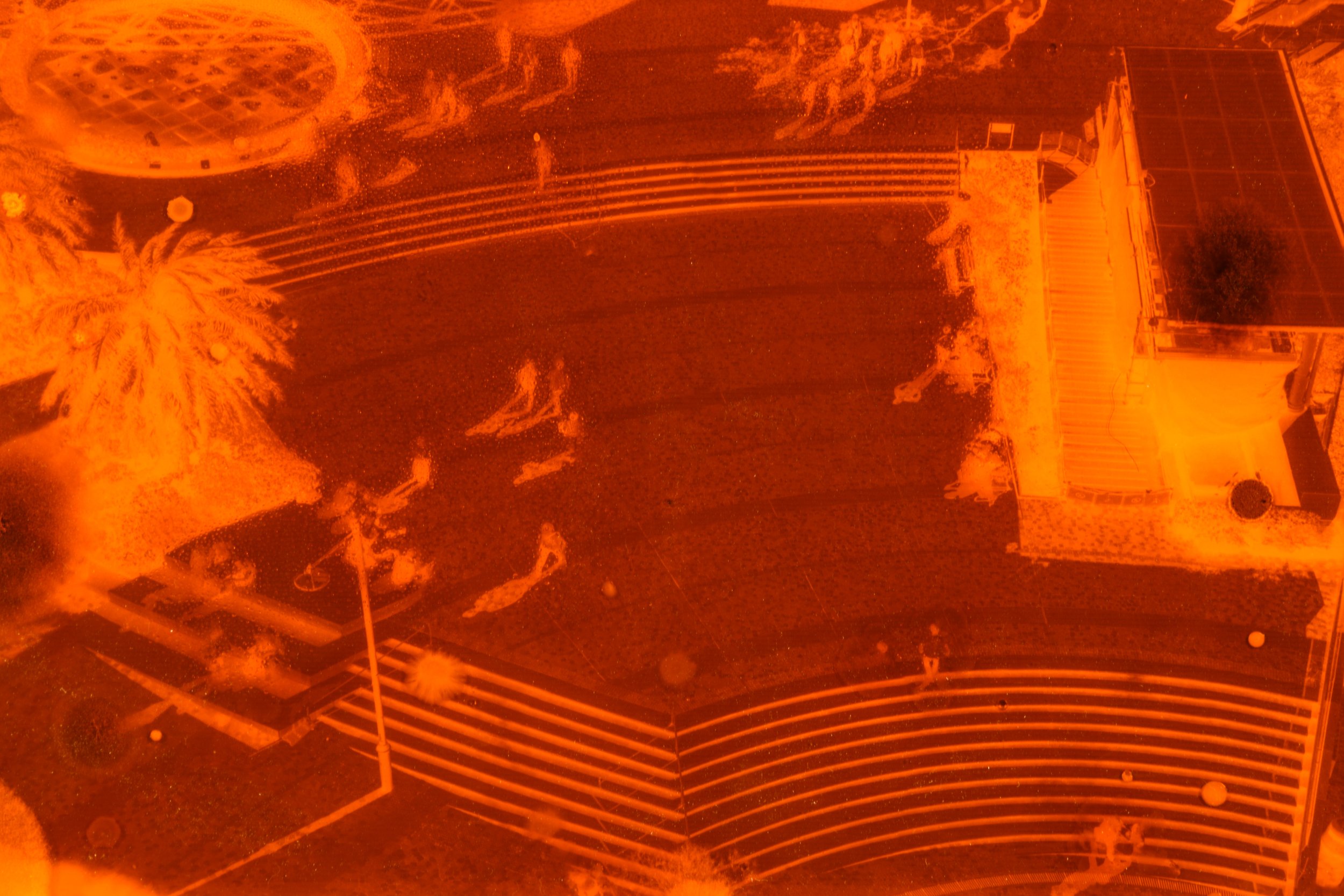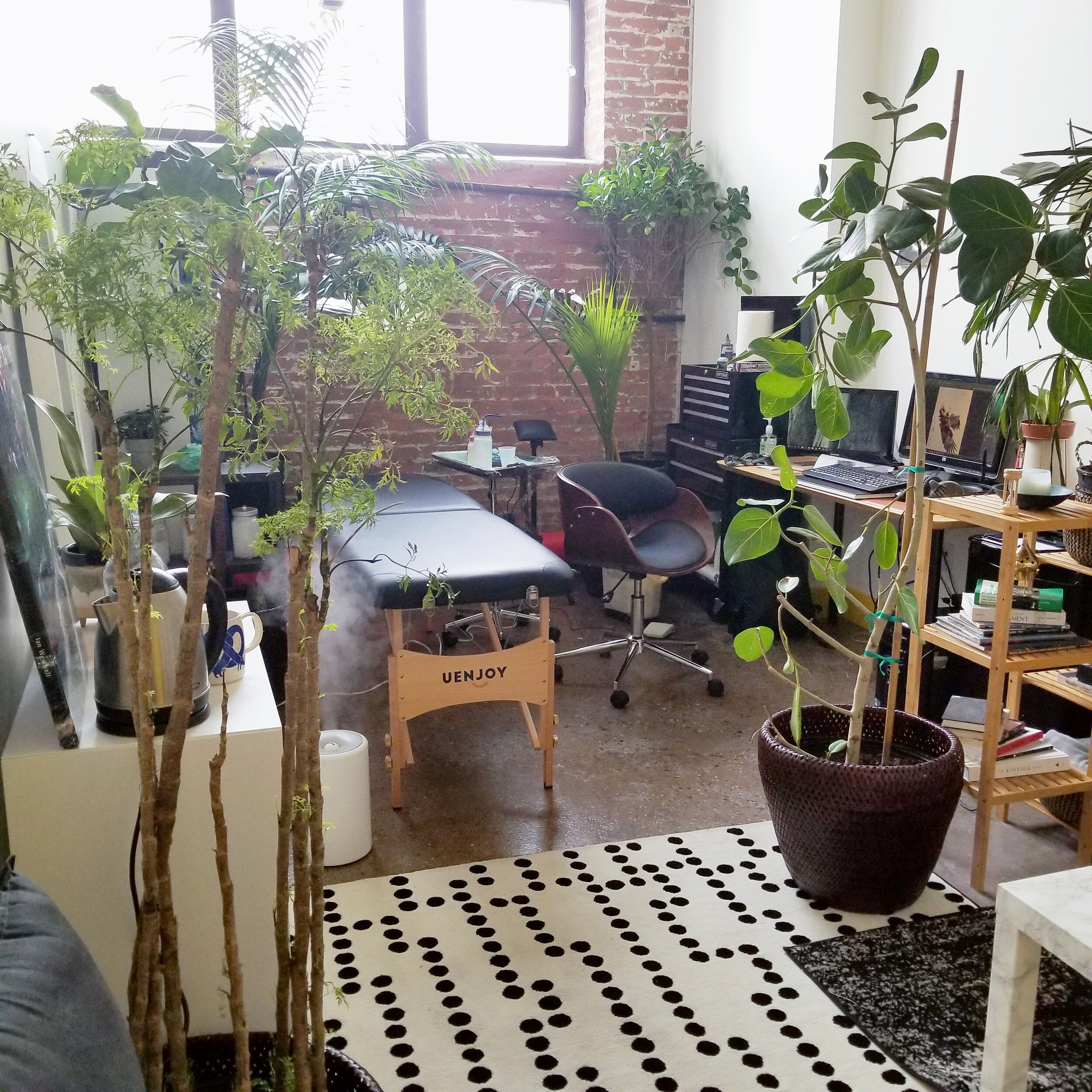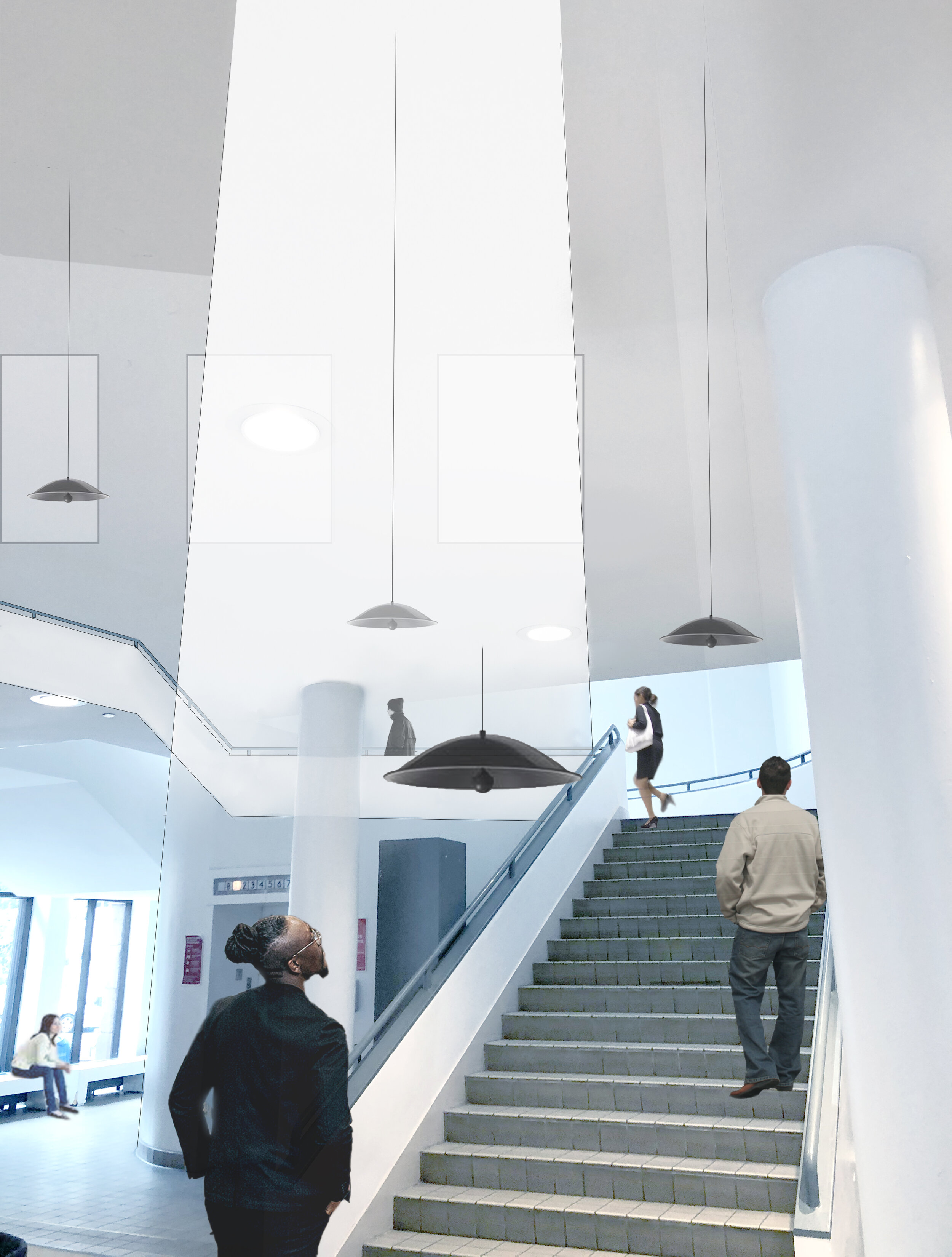On Breath
2020 Interactive Breath Interface Installation
(In Research and Development Stage)
Materials: Color-changing Smart Lights, Parabolic Speaker, Spire Breath Sensor, and Touchdesigner Program
The first act we partake in when we are born is to breathe. However, most people go through their lives without learning to breathe consciously. Breathwork and meditation are more common in eastern cultures than in the west, but we can all benefit from a better understanding of our breath as humans. Stress reduction and heart rate variability are the typical benefits of breath management, but I am also interested in the relationship between breath and time perception. There are many meditation apps. Yet, there is a lack of interactive breath sensors in the market. I am using the only one currently available for consumer use, Spire Health Tags, for my project. The sensor is far from perfect, but until I can develop a better sensor, it is what I have to test with. This project is a proof of concept that I hope to actualize with more accuracy and precision moving forward.
On breath is a light interface that utilizes human breath data to give feedback to alter our relationship to time. I have a hypothesis that time is malleable, and people can consciously control their time perception. As part of a larger research, I am exploring breath management techniques as a preliminary access point to human time perception. Historically, the research on human breath is limited in western sciences. I am hopeful more research will be undertaken moving forward as a result of greater attention towards breath due to the Covid-19 pandemic.
My goal is to create devices that help people become more aware of their breathing patterns and gain agency over their time perception by managing breaths. The end product can vary in scale from an environmental installation to a compact wearable device. Currently, I am working on a larger scale version as an interactive installation at my studio.
There are three different interfaces that one can use to interact with the light.
Breathing guide mode guides participants with timed cues
A threshold-based system that informs the user if their breathing exceeds the preset breaths per minute limit.
Breath goal mode sets a limit for the number of breaths allocated for one day, similar to a step counter working in reverse.
Breathing Guide Mode
The installation uses various breathing meditations from Prana Breath Wiki for guided breath management. Dr. Alan Watkins’ research on coherent breathing suggests benefits for patterned rhythmic breathing in the form of better heart rate variability. Breath mindfulness meditation also slows down time by increasing the memory’s capacity for temporal experience. This mode can also be a large-scale visual and auditory aid in meditation, similar to the functions of the Prana Breath meditation app.
Threshold Mode
In this mode, the user can set a limit for the breaths per minute (bpm) rate and the light will inform the user when his/her breath exceeds that limit. On average, humans have a resting breath rate of 12 - 15 bpm. For slow breathing exercises, a breath rate of 7 bpm is advisable. Thus, the light can be set to turn red when someone’s breathing reaches more than 7 bpm and turn green when bpm is maintained under 7 bpm. For example, this interface is useful when I am tattooing, and the client needs to remember to slow down their breathing to help in pain management.
Daily Goal Mode
This is an experimental idea where one can set a target goal for the number of breaths they wish to take in one day. Similar to how people set step targets for fitness or weight loss, this feature can set a number for max breaths that one can then try to stay under each day. It works by starting the day off with a full light circle, which slowly chips away like an hourglass as one uses up their breaths for the day. This feature will help people be mindful of the need to remain calm and regulate their breaths throughout their entire day.
Research Document
As mentioned before, the current technology for recording breath data is not nearly as precise as I would prefer it to be. However, I hope to further realize this project in collaboration with other researchers working in biosensors and wearable technology. I would like to thank Russell Greenberg from Rux Studio for being an early consultant in this research, Spire Health Tags for developing a consumer product that gives me access to breathing data, and Oleksandr Albul of Prana Breath for developing a customizable breath meditation app.


































